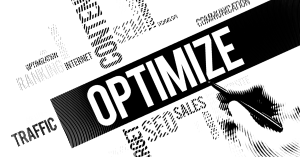
Optimizing buyer enablement
Optimizing buyer enablement You may be wondering how to entice customers to buy your product. There are a few key things you can do to
As the world of business becomes more and more competitive, it’s important for sales teams to have every advantage they can get. One way to stay ahead of the competition is to Omni-channel selling.

Mads Winther

Omni-channel selling is the ability to sell through multiple channels, including online, in-person, over the phone, and through direct mail. This approach allows businesses to reach more customers and close more sales.
Increased reach: When you sell through multiple channels, you can reach more potential customers. This is especially important in today’s global economy, where customers can be located anywhere in the world.
Greater flexibility: Omni-channel selling gives you the ability to adjust your sales strategy on the fly, depending on what’s working and what’s not. If one channel isn’t performing well, you can simply switch to another.
Improved customer service: Selling through multiple channels allows you to provide a better overall customer experience. Customers can choose the channel that they’re most comfortable with, and they can get help and support when they need it.
Increased sales: Perhaps the most important benefit of omni-channel selling is that it can lead to increased sales. By reaching more customers and providing a better overall experience, you can close more sales and grow your business.
If you’re not already using an omni-channel approach, now is the time to start. It’s one of the best ways to stay ahead of the competition and grow your business.
It can be costly to set up: Implementing an omni-channel approach can require a significant investment, both in terms of money and time.
It can be difficult to manage: Selling through multiple channels can be complicated, and it can be tough to keep track of everything.
There’s a risk of overwhelming customers: If you’re not careful, you can end up bombarding customers with too many messages and channels. This can lead to frustration and ultimately cause them to go elsewhere.
With that being said, there are still more pros than cons when it comes to Omni-channel. The key is to find the right balance that works for you and your business.
Omni-channel selling is the ability to sell through multiple channels, including online, in-person, over the phone, and through direct mail. This approach allows businesses to reach more customers and close more sales.
The short answer is: no.
As the world of business becomes more and more competitive, it’s important for sales teams to have every advantage they can get. Omni-channel selling is one way to stay ahead of the competition.
Some businesses may be able to get by without using an omni-channel approach, but it will be increasingly difficult to do so. Those that don’t use an omni-channel approach will likely find themselves at a disadvantage, and they may eventually be forced to adopt one in order to stay competitive.
As the world of business becomes more and more competitive, it's important for sales teams to have every advantage they can get. Omni-channel selling is one way to stay ahead of the competition.
Omni-channel is important for B2B sales teams because it:
Allows businesses to reach more customers
Helps businesses to be more flexible
Provides better customer service
Can lead to increased sales
Is necessary to stay competitive in the future
If you’re not already using an omni-channel approach, now is the time to start. It’s one of the best ways to stay ahead of the competition and grow your business.
The main alternative to an omni-channel approach is a multi-channel approach. In a multi-channel approach, businesses sell through multiple channels, but they don’t necessarily integrate those channels.
For example, a business might have an online store, a brick-and-mortar store, and a catalog. But each of those channels operates independently, and there’s no real coordination between them.
A multi-channel approach can work well for some businesses, but it has several disadvantages when compared to an omni-channel approach. These disadvantages include:
Lower sales: A multi-channel approach can lead to lower sales because it doesn’t allow businesses to take advantage of the full potential of each channel.
Poor customer service: A multi-channel approach can also lead to poor customer service. customers can get frustrated when they have to deal with multiple channels that aren’t integrated.
Difficulty managing channels: It can be difficult to manage multiple channels, and businesses may find it difficult to keep track of everything.
Increased costs: A multi-channel approach can also be more expensive, since businesses have to maintain separate systems for each channel.
The best way to implement an omni-channel approach is to start by integrating your channels. This means that you should have a single system that connects all of your channels. This will make it easier for you to manage your channels and provide better customer service.
You should also make sure that your channels are coordinated. This means that you should have a plan for how each channel will be used. For example, you might use your online store to generate leads, and then use your brick-and-mortar store to close the sale.
You should also focus on providing a consistent experience across all of your channels. This means that customers should have the same experience regardless of how they contact you. For example, if a customer calls your customer service number, they should be able to find the same information on your website.
Your Business
How many touchpoints are you using to reach your customers?
Are all of your channels integrated?
Do you have a plan for how each channel will be used?
Are your channels coordinated?
Do you provide a consistent experience across all of your channels?
How well are you able to track customer interactions across all channels?
How easy is it for customers to move between channels?
How satisfied are your customers with their experience?
How much does it cost you to maintain your omnichannel strategy?
Are you seeing an increase in sales or other benefits as a result of your omnichannel strategy?
If you can answer these questions, you’ll have a good idea of whether or not your omnichannel strategy is working. If you’re not seeing the results you want, you may need to make some changes to your strategy.
Omni-channel is a must for sales teams. It allows businesses to reach more customers, provides better customer service, and can lead to increased sales. The best way to implement an omni-channel approach is to start by integrating your channels. You should also make sure that your channels are coordinated and that you provide a consistent experience across all of your channels.
By following these tips, you can make sure that your omnichannel strategy is working for your business. If you’re not seeing the results you want, you may need to make some changes to your strategy.
A Sales Playbook is the go-to tool for you and your sales team when you want to built and implement a repeatable, scalable, and profitable sales motion

Optimizing buyer enablement You may be wondering how to entice customers to buy your product. There are a few key things you can do to

Developing a sales pipeline Sales pipelines are often thought of as being exclusively for sales teams, but the truth is that they can be just

The future of B2B sales is hybrid As the world of business evolves, so too does the way that companies sell to one another. In

The Playbook House ApS – Solbakken 38 – 9210 Aalborg SO – Denmark – CVR DK43114611
Copyright © 2022 The Playbook House ApS. All rights reserved